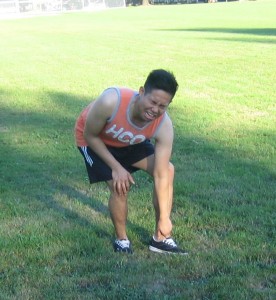A strained muscle is often termed a pulled muscle because the physiological cause why a muscle is strained is due to the overstretching of the muscle beyond the elasticity point. A muscle strain can become a very painful injury. It can produce significant discomfort that prevents the person from carrying out movements without feeling soreness, pain and tenderness on the affected area. A strained muscle can likewise become an emergency situation when the pulled muscle fibers tear. Learning the first aid treatment for a torn or strained muscle will come very useful especially in sparing the victim from the discomfort and pain that can occur with the condition.
What causes a strained muscle?
Overuse or too much physical activity can make the muscle reach its breaking point. Too much exercise or physical activity without warming up for instance can make the muscle susceptible to straining and breaking. Traumatic accidents can also result to a strained muscle and this can become a serious condition as well.
The strained muscle symptoms

Most of the time, a strained muscle will manifest pain and tenderness on the affected area. Touching the muscle can make it sensitive to touch and pressure and it can limit activities. When the muscle fiber tears from its attachment, discoloration of the skin and bruising becomes apparent. Swelling also occurs and the area may be warm to touch in the presence of an inflamed muscle tissue.
First aid for a strained muscle
Minor strain to the muscle will not really require a doctor’s visit. There are first aid management that can help ease the condition. Strained muscles usually recovery by itself and the length of time for recovery will vary upon the extent of the damage or injury to the muscle tissues. Applying an ice over the affected area will help relieve swelling and inflammation. Simple wrap the ice on a clean cloth and place it on top of the affected area. Using cold compress or ice treatment is ideal on the first 24 hours up to 3 days from the time the muscle strain occurs. Applying the ice for 15 minutes will help relieve swelling. Make sure to rest the sore muscle for at least a day. Causing more activities on the strained muscle may aggravate the tissue injury. Wait until the pain subsides before you can introduce gentle activities to the injured muscle. Taking pain medications will also help you overcome the discomfort of pain and swelling.
When a strained muscle becomes an emergency
Make sure to immediately go to a doctor when you are unable to move the muscle or when the affected area is bleeding. It is also prudent to have a medical check up if the pain does not go away after several weeks of rest.
